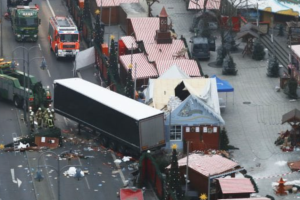First modification:
With temperatures that could exceed 45 degrees during the next few days in some parts of the country, the authorities declared a state of contingency, for fear of an increase in fires in the country, which reached more than 100 active fronts in recent days.
This Monday, Portugal declared a state of contingency until Friday, July 15, due to the forest and rural fires that have been taking place throughout the country for four days.
“The state of contingency may be prolonged if necessary,” said the Minister of Internal Administration (Interior), José Luís Carneiro, who specified that other measures could also be taken based on monitoring the environmental situation.
The Portuguese Institute of the Sea and the Atmosphere (IPMA) decreed an orange alert in almost half of the country’s districts due to weather forecasts that warn temperatures of up to more than 45 ºC in some areas, such as Alentejo, where it is expected May this Wednesday be the hottest day of the year.
“This is not a very normal situation,” IPMA meteorologist Patrícia Gomes told SIC TV. “It is serious in all aspects, even for our health… it is not usual to see such long periods with such high temperatures.”
These temperatures, accompanied by strong winds, do not let up in the firefighters’ struggle to control the flames and can generate new fires and the reactivation of already controlled fires. That is why the authorities fear that the worst is yet to come.

The declaration of the state of contingency prohibits the population from accessing, circulating and staying in forest spaces. Only relief teams will be able to access these spaces.
The exceptional measure also seeks to reinforce the fire department that is on the ground. The Portuguese government could hire up to 100 new teams for this purpose, if necessary. Forest agents and caretakers of nature will also be mobilized.
35 sources of fire this Monday, most of which controlled
Until Sunday there were 107 fire sources and this Monday, the authorities were fighting 35 fire sources, of which five are still active without representing a serious danger; another five in the resolution process and the remaining 25 fully controlled, according to the local media ‘RTP’.
According to the National Emergency and Civil Protection Authority (ANEPC), so far, rescuers have rescued 41 people who were trapped in the middle of the flames and there are reports of 27 minor injuries and one serious injury with a broken wrist. Most of the people affected do not belong to the civilian population, but to the Public Force and firefighters.
To control the outbreaks, the authorities have carried out more than 1,000 operations with the help of 459 ground vehicles and 62 planes, two of them sent by neighboring Spain thanks to the European Civil Protection Mechanism activated by Portuguese Prime Minister António Costa.
Regarding the environmental balance, the fires have consumed more than 6,000 hectares throughout the country. The center and north are the most affected regions, especially the districts of Porto, Lisbon and Braga. Around the city of Pombal, 200 hectares of pine forest were destroyed and in Ourem, near Lisbon, the fire devastated 2,084 hectares.
Precisely in Ourem the most serious focus was presented, whose flames were caused by a 45-year-old man who was already captured by the Police. The detainee had a criminal record for forest fire and had been convicted in 2013.
“The worst combination of factors since Pedrógão Grande”
This is how Minister José Luís Carneiro described the events that the country is experiencing.
The head of the Interior refers to the tragic fires of June 2017 in the Portuguese region of Pedrógão Grande, which caused 66 deaths and devastated 24,000 hectares. They were recorded as the worst fires that the country has experienced in its recent history.
Although the flames were caused by technical failures of the electrical company Energias de Portugal (EDP) and not by climatic conditions, Pedrógão Grande reminds the population and the authorities of the seriousness of the fires.
The shadow of climate change
According to Jennifer Balch, a fire ecologist at the University of Colorado, “Climate change isn’t the only factor, but it’s a big and important part.” Science has shown that the earth’s temperature has been rising by 0.2°C every year since the 1980s, making summers hotter than ever before.
In this summer, even days before its start, Europe has recorded very high temperatures.
The Iberian Peninsula is one of the areas most affected by this heat wave on the continent; while Portugal is fighting the fires, Spain is also experiencing conflagrations caused by extreme heat and the State Meteorological Agency has activated the orange alert in ten Spanish regions, where the thermometer could reach 42 ºC this week.
In turn, high temperatures could affect energy systems and thus the cost of providing air conditioning in infrastructures. However, for its part, the European Union (EU) indicates that so far this year it has quickly filled gas deposits and has 52% reserves, 27% more than at the end of 2021.
With EFE, Reuters, AFP and local media












Add Comment